

Delivering Advanced Routine & Emergency Assessments.

This service is undertaken with the financial support of the Canadian Space Agency
SOLUTION OVERVIEW


Developed for the Canadian Space Agency (CSA), the Routine, Emergency, Assessment, Care, Treatment – Medical System of Systems (REACT-mSoS™) is a high-tech medical solution designed to provide comprehensive care both in space and on Earth.
It includes a portable and durable Medical Kit that is waterproof and operable in extreme temperatures, containing essential lightweight, low-power, cordless devices. The software offers hybrid deployment for both online and offline, featuring a private Mobile Body Area Network and Connectivity Gateway for system and service interoperability in space or earth settings.
Enhanced by AI for System-Level Autonomy (AI-SLA) and healthcare Knowledge Graphs (KGs), it supports routine and emergency care with advanced triage and clinical decision support, providing a list of probable conditions, probability and severity scores, and clear explanations for diagnoses. This system ensures astronauts and caregivers have the tools needed to handle medical situations effectively in challenging environments.
More than 500 health data points can be entered either autonomously or manually, facilitating the assessment of multiple health scenarios.
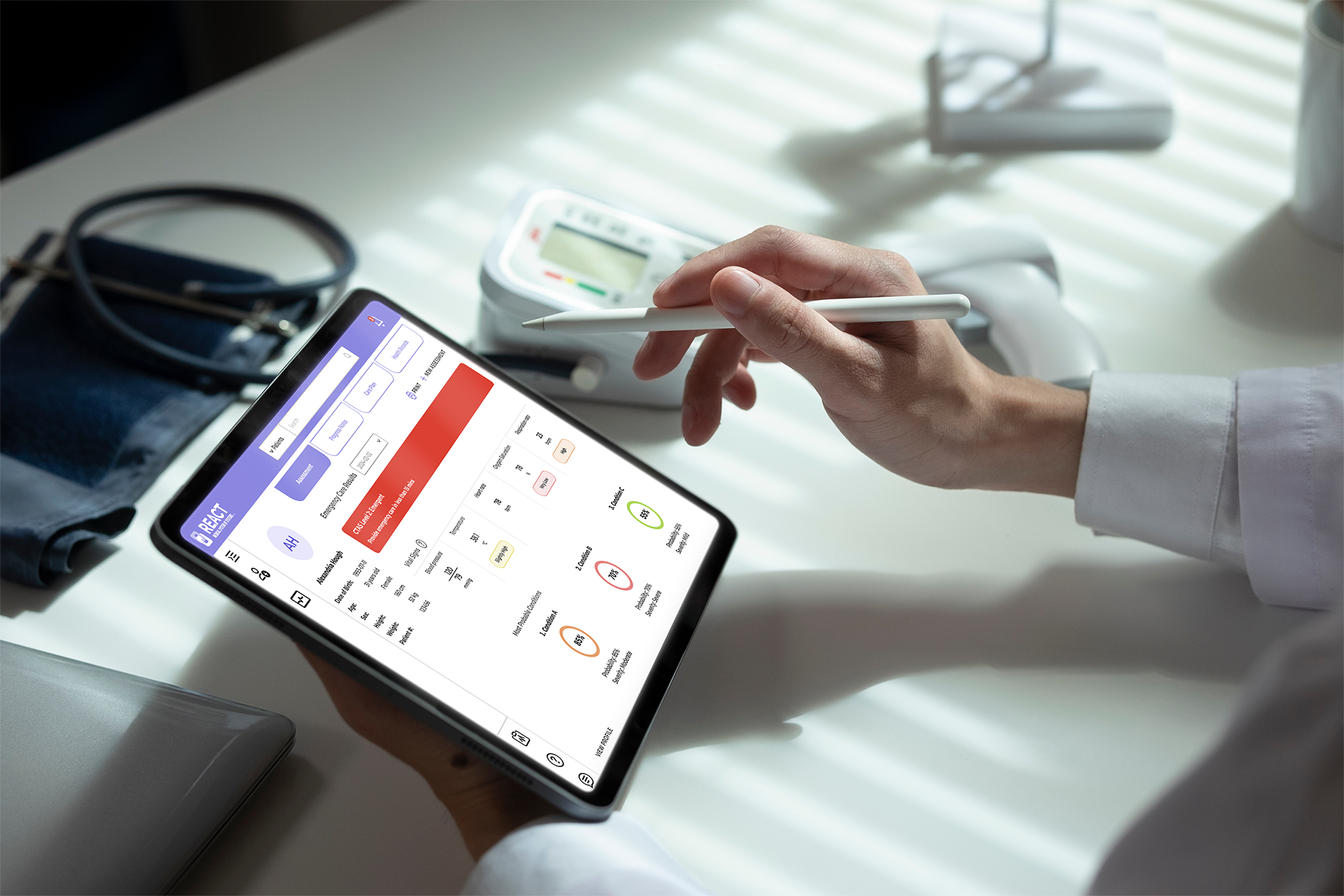
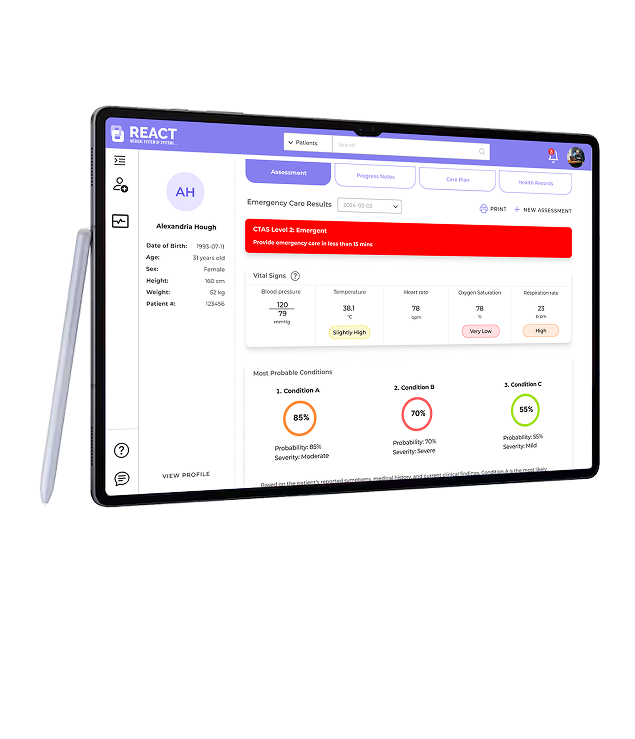
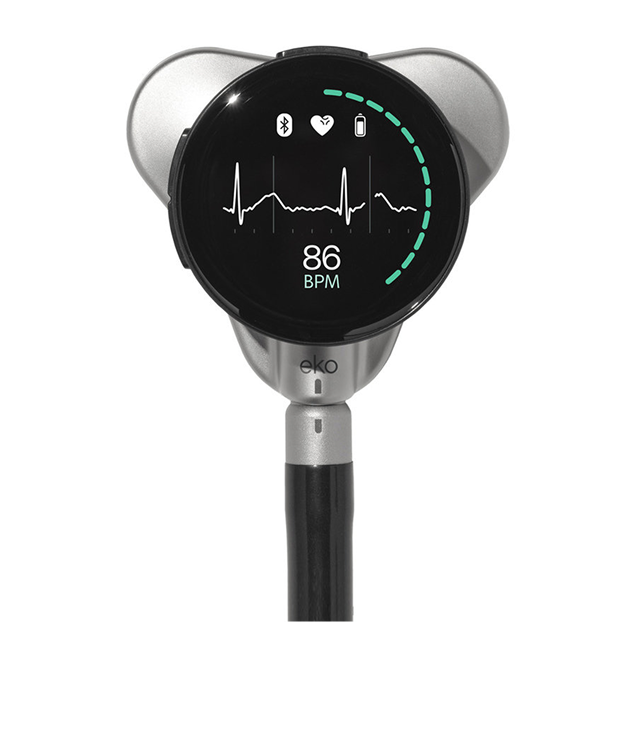
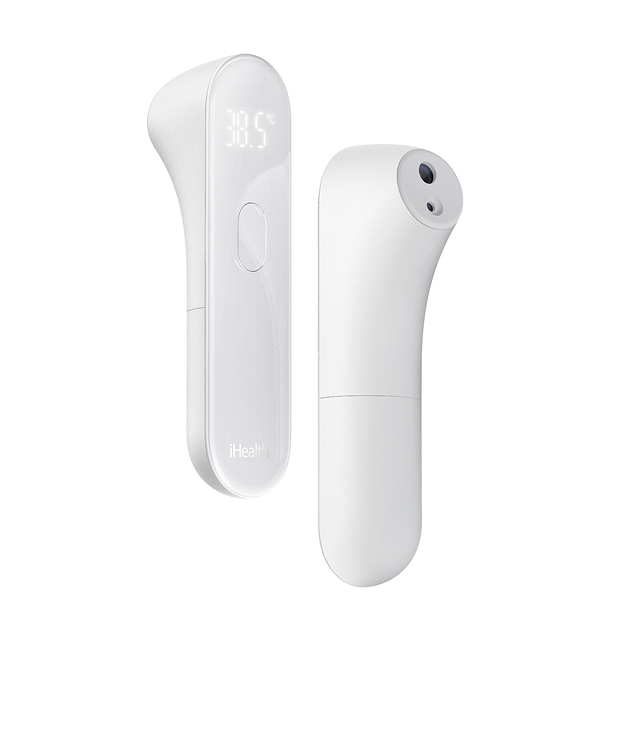

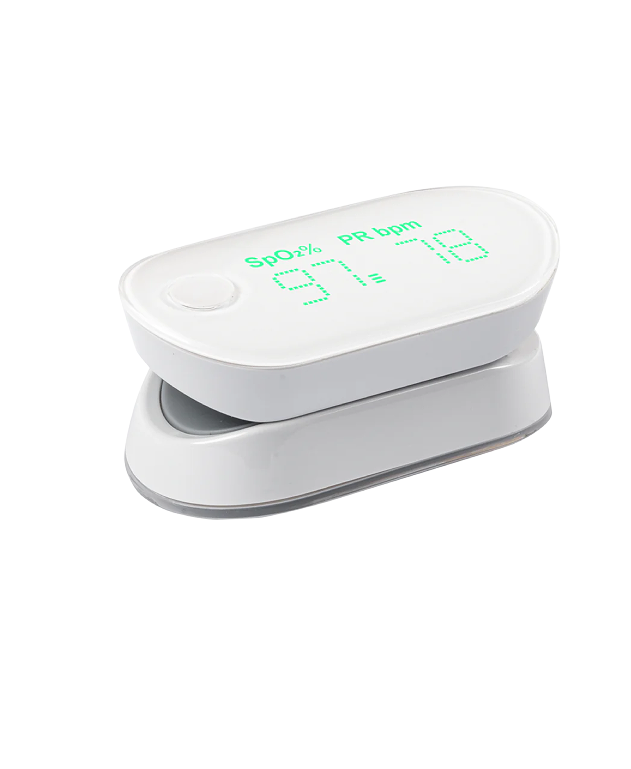
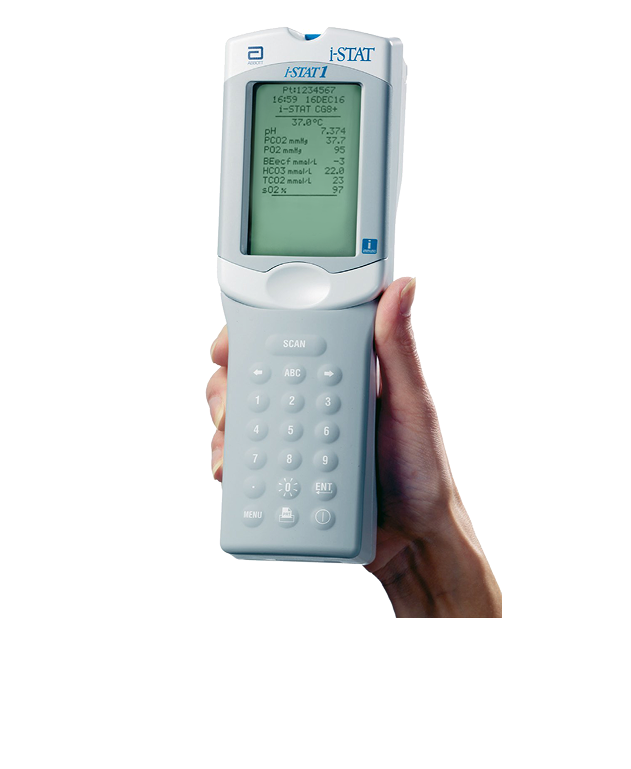
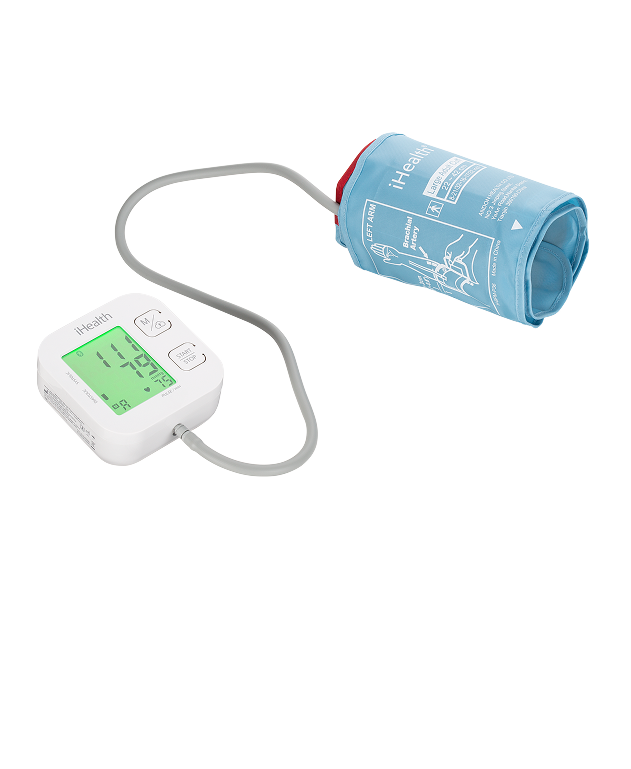
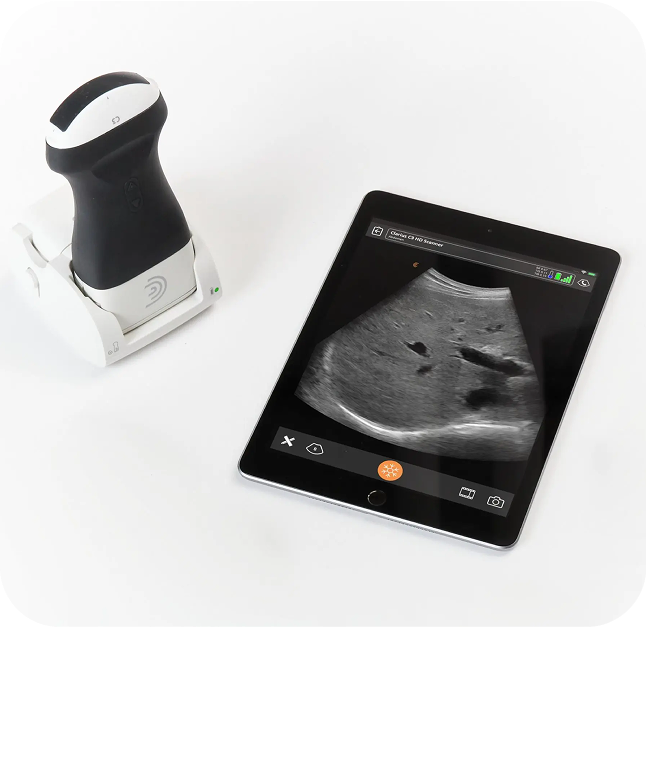
TWO TYPES OF DIFFERENTIAL DIAGNOSTICS

1
Routine
The user can perform a focused examination of the relevant body system, leveraging medical history and physical Exam, to refine the differential diagnosis. From the differential diagnosis, which identifies the most probable conditions, a clinician can follow actionable recommendations, utilize progress notes to document observations during assessments, adjust the care plan and treatment based on the differential diagnosis, and print the completed assessment.
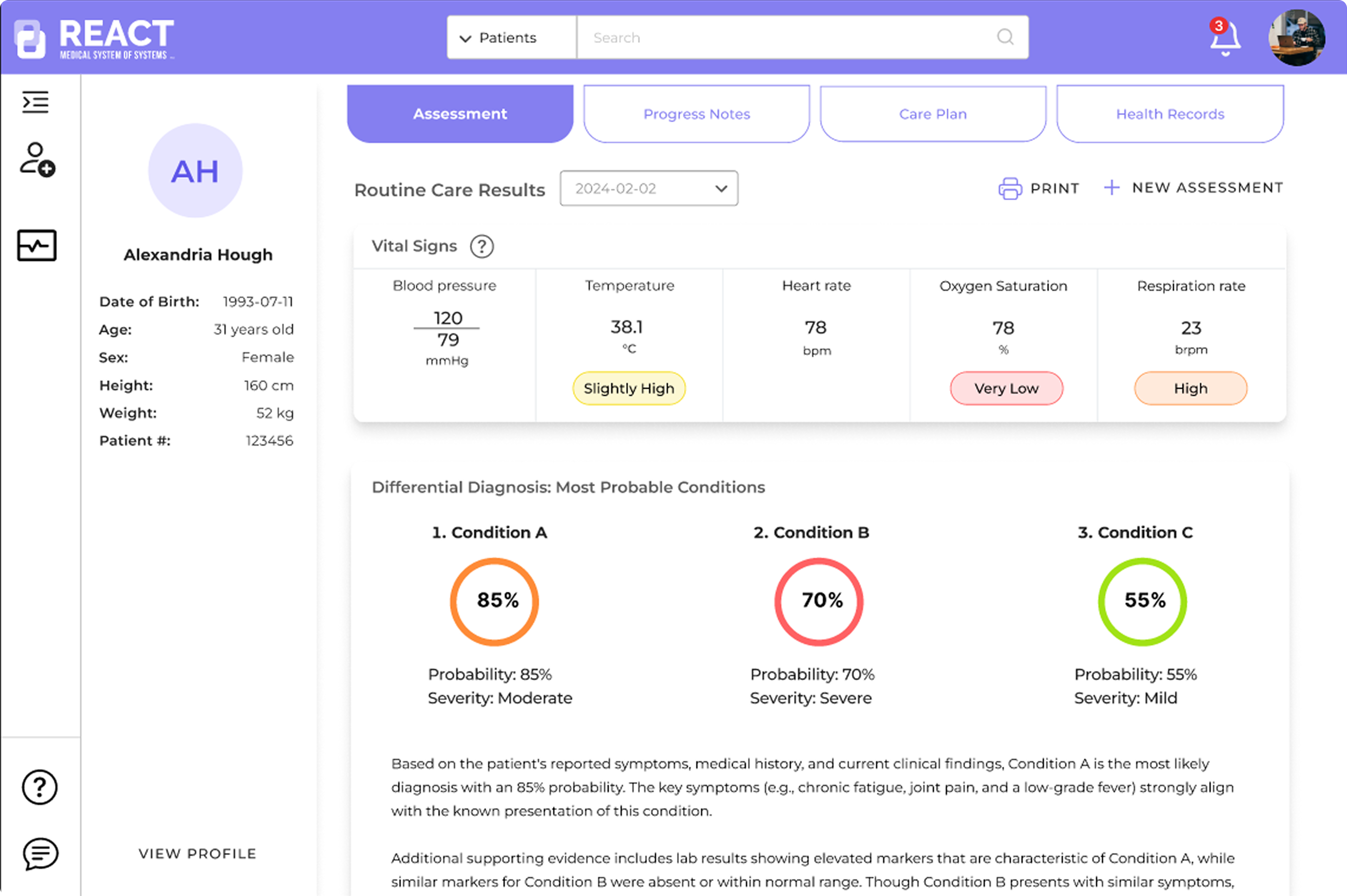
2
Emergency
Based on the Chief Complaint, the user can initiate the Primary Assessment, which encompasses Emergency and Triage Acuity, to establish an initial differential diagnosis. This assessment facilitates the triage of emergencies by adhering to the Canadian Triage Acuity Scale (CTAS), determining the urgency and guiding subsequent steps.
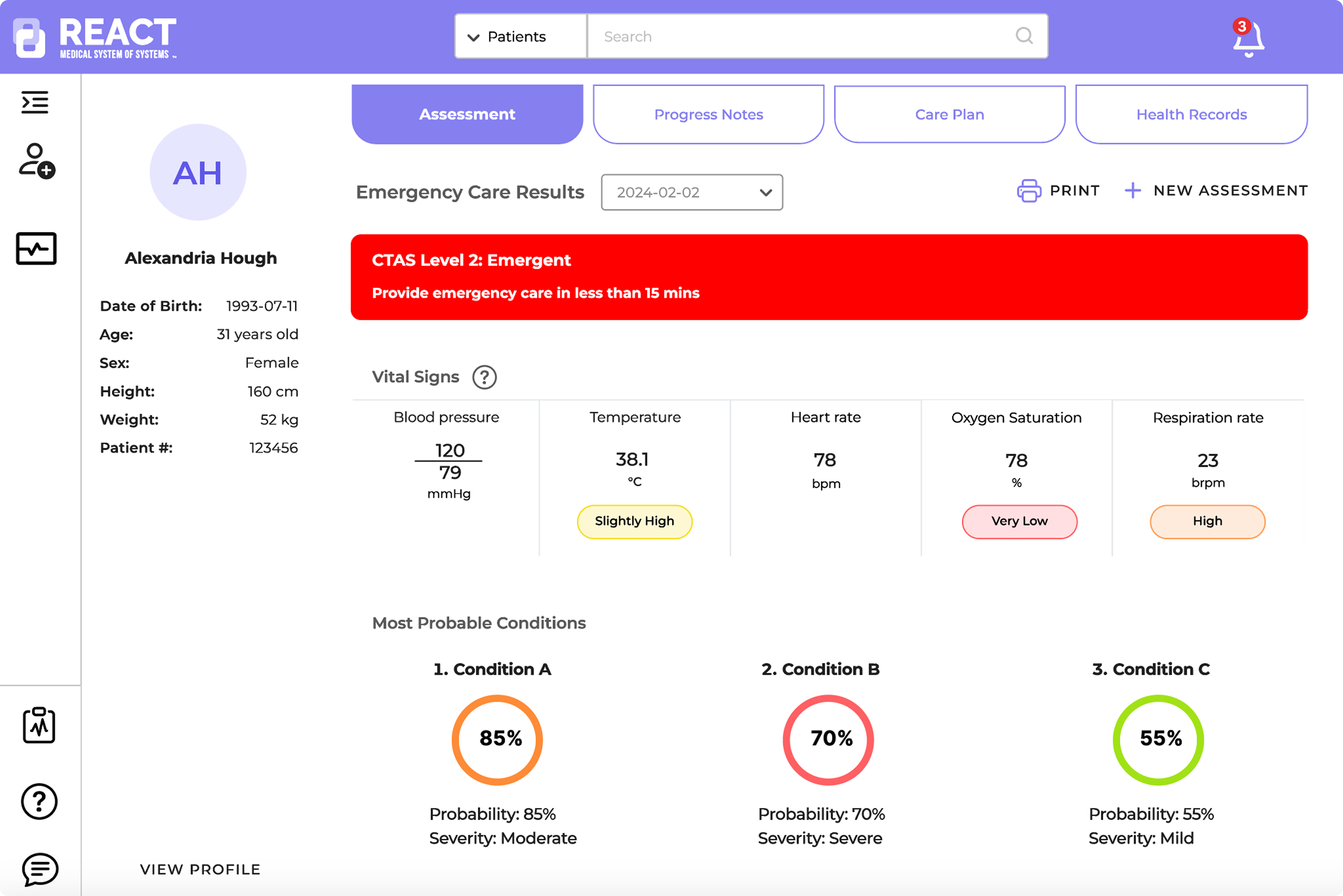
3
Assessment
Thorough evaluation, including primary (life-threatening) and secondary assessments.
4
Care
Providing appropriate medical treatment based on assessment findings.
5
Treatment
Implementing interventions for medical issues.
WHO BENEFITS?


Astronaut Emergency
ASTRONAUT NAME: Emily
LOCATION: International Space Station
SCENERIO: Sudden Chest Pain
PROTOCOL:
1. Conduct a Primary Assessment: With the help of her fellow astronaut, Sam. Receive a differential diagnosis: Determines the urgency of the situation and guides the next steps. In this case, Emily first needs to be stabilized with oxygen.
2. Conduct a focused examination: Conducting a Physical Exam to receive a more accurate differential diagnosis with a triage acuity scale following CTA’s Guidelines.
3. Results: The REACT-mSoS™ Software provides vital updates, probable conditions, and treatment recommendations.
4. Post Care: Emily and Sam logs her activities, and maintain regular follow-ups, adjusting the treatment plan as needed with continuous support from the medical team on Earth.
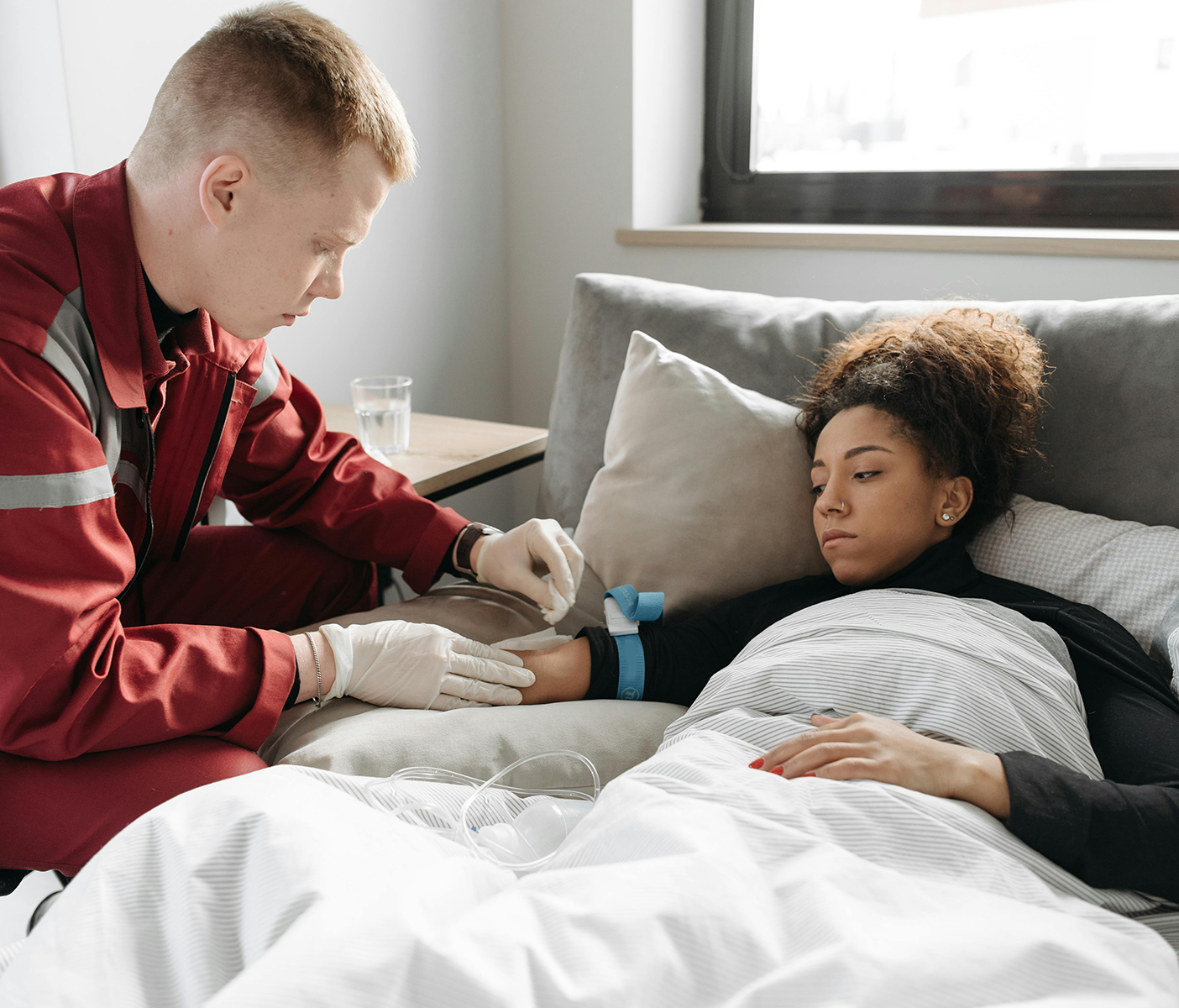
Acute Care in Remote Places
PATIENT NAME: Jordan
LOCATION: Remote Community
CHRONIC DISEASE: Diabetes
SCENERIO: Sudden dizziness and confusion.PROTOCOL:
1. Conduct a Primary Assessment: With the help of a medical professional.
2. Receive a differential diagnosis: Determines the urgency of the situation and guides the next steps. In this case, Jordan requires glucose to be stabilized.
3. Conduct a focused examination: Providing Medical History and conducting a Physical Exam to receive a more accurate differential diagnosis.
4. Results: The REACT-mSoS™ Software provides vital updates, probable conditions, and treatment recommendations.
5. Post Care: Jordan logs his activities, and maintains regular follow-ups, adjusting his treatment plan as needed with continuous support from his healthcare provider.
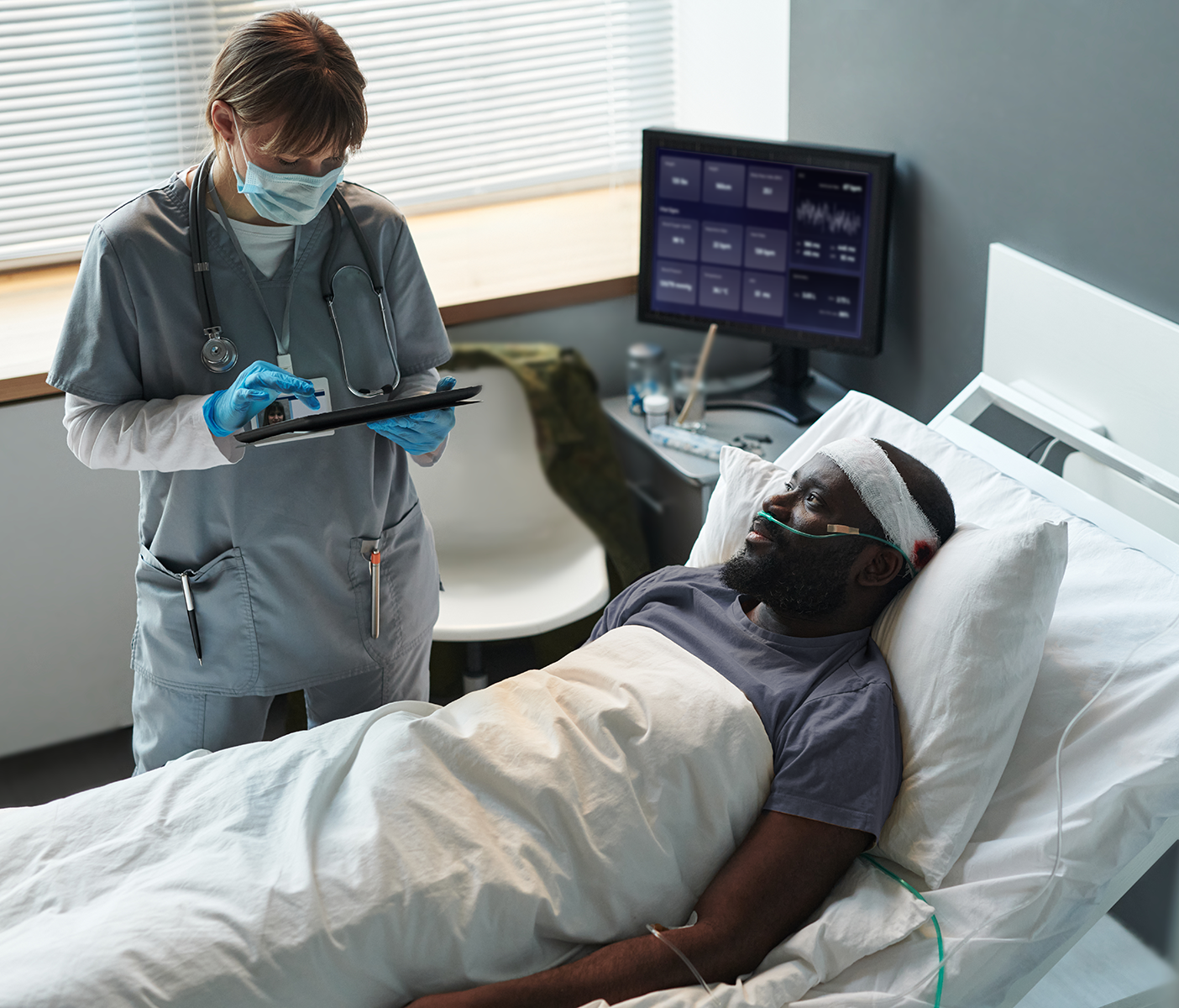
Triage in a Hospital Emergency Room
NAME: Jordan
LOCATION:
Hospital / Emergency room
SCENERIO: Head Trauma
PROTOCOL:
1.Conduct a Primary Assessment: With the help of medical professional, Nurse Emma.
2. Receive a differential diagnosis: Determines the urgency of his condition and supports Emma to advise on the appropriate department, timing, and type of care Tom requires.
3. Conduct a focused examination: Providing Medical History and conducting a Physical Exam to receive a more accurate differential diagnosis.
4. Results: The REACT-mSoS™ Software provides vital updates, probable conditions, and treatment recommendations.
5. Post Care: Emma and the healthcare team log all activities and ensure continuous communication with other associated healthcare professionals, adjusting Tom's treatment plan as needed for timely and appropriate care.
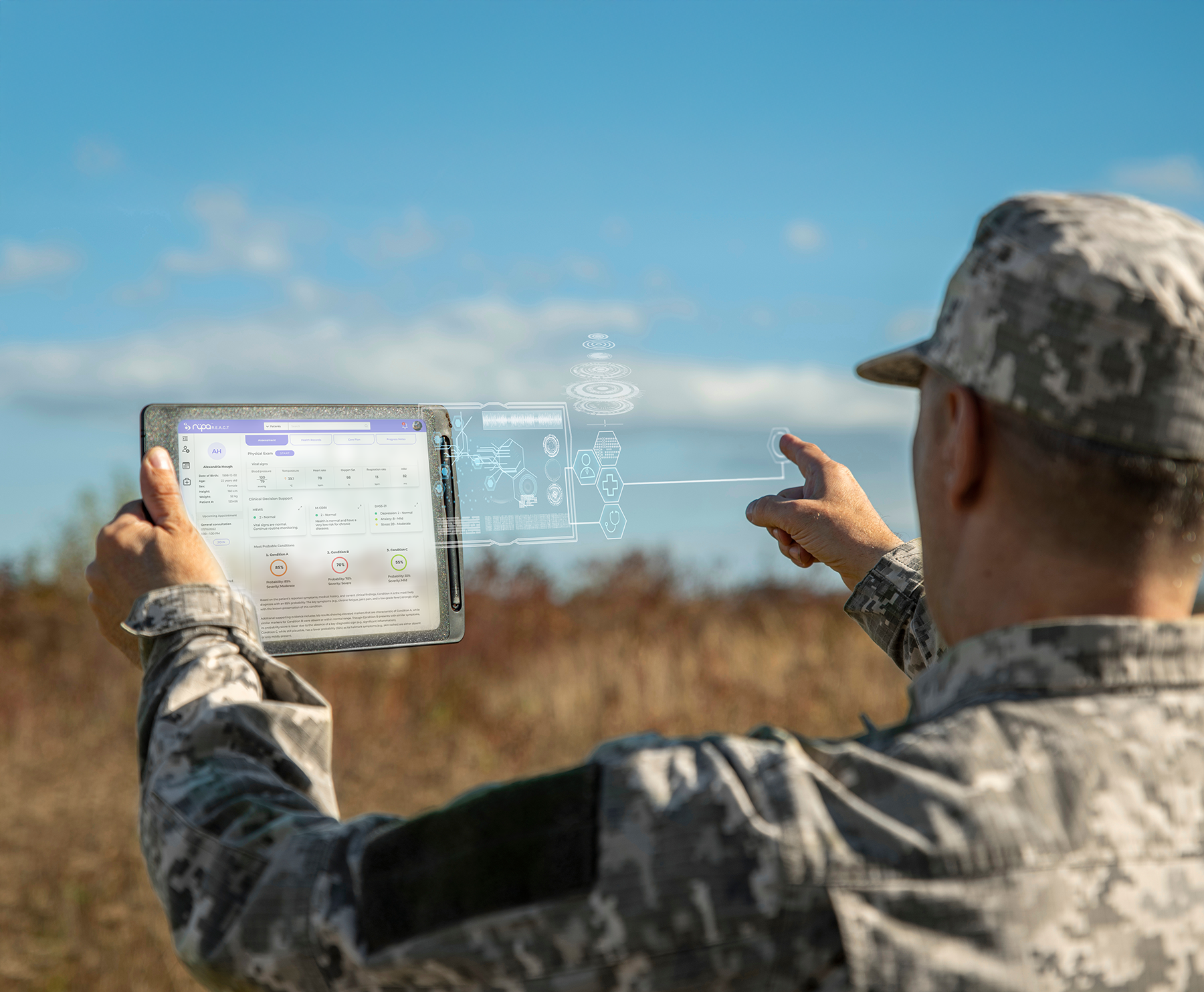
Combat Casualty Care
SOLDIER NAME: Alex
LOCATION: Combat zone
SCENERIO: Severe wounds after explosion
PROTOCOL:
1. Conduct a primary assessment: With the help of combat medic John.
2. Receive a differential diagnosis: Determines the urgency of his condition and supports Alex to advise on the appropriate department, timing, and and immediate care required.
3. Conduct a focused examination: Providing Medical History and conducting a Physical Exam to receive a more accurate differential diagnosis.
4. Results: The REACT-mSoS™ Software continuously monitors and provides updates on Alex’s vitals.
5. Post Care: John logs all activities and ensures continuous communication with the field hospital and other medical teams, adjusting Alex’s treatment plan as needed for timely and appropriate care, ensuring he receives the best possible care quickly in a challenging combat environment.
SPECIFICATIONS

Medical Devices & IoMT Overview
STETHOSCOPE: Heart sounds, Lung sounds, Audio recordings, Waveform visualizations
THERMOMETER: Forehead temperature
OTOSCOPE: High-resolution images and videos of the ear canal and tympanic membrane, Visual documentation for telemedicine or diagnostics.
GLUCOSE METER: Blood glucose levels, Electrolytes (Na+, K+, Cl-), Blood gases (pH, pCO2, pO2), Hematocrit, hemoglobin, Cardiac markers (e.g., troponin) depending on cartridge.
BLOOD PRESSURE MONITOR: Systolic and diastolic blood pressure, Pulse rate, Irregular heartbeat detection
BLOOD OXIMETER: Blood oxygen saturation (SpO2), Pulse rate, Perfusion index
ULTRASOUND: Real-time ultrasound images and videos, Measurements (e.g., fetal biometry, organ size), Annotations and reports, DICOM export for EMR integration.
EYE CHART/AUTOFRACTOR: Objective refraction measurements (sphere, cylinder, axis), Pupil size, Interpupillary distance
PENLIGHT: No data collected; used for visual inspection (e.g., pupil response, throat, skin
Software & Apps Overview
The REACT-mSoS™ features proprietary hybrid software for accurate diagnosis, available both online and offline, and a Mobile Body Area Network (MBAN). The tablet serves as an edge computing device, gateway, and single interface, enabling system interoperability and service extra-operability, which are critical in the realm of portable medical technology systems in space or remote locations on Earth.
INTEROPERABILITY AND EXTRA OPERABILITY INTERCHANGE:
Enables secure, efficient, and real-time communication and data exchange between Tablet, medical devices, and healthcare systems using Interoperability APIs.
HEALTHCARE KNOWLEDGE GRAPH:
Leverages healthcare knowledge graphs to enhance data integration, analysis, and decision-making processes.
AI-SLA INTEGRATION: Operationalizes the solution with Artificial Intelligence System Level Autonomy (AI-SLA) and enabling virtual assistant and voice activation capabilities for enhanced user experience and accessibility.
DECISION SUPPORT SYSTEM: A predictive engine, a predictive engine that offers real-time, evidence-based recommendations to healthcare professionals, improving diagnostic accuracy and treatment outcomes.
ELECTRONIC HEALTH RECORD (EHR): Tailored to integrate seamlessly with the REACT-mSoS™, ensuring comprehensive and secure health data management.
SOFTWARE APPLICATION: A layer of data analytics that provides users with insights and visualizations, enhancing their ability to interpret and act on the data collected.
Computing System
MOBILE BODY AREA NETWORK (MBAN): A private network featuring Bluetooth, Wi-Fi 7, mobile hotspot, and 5G capabilities for seamless communication.
HYBRID DEPLOYMENT: Available both Cloud and Edge.

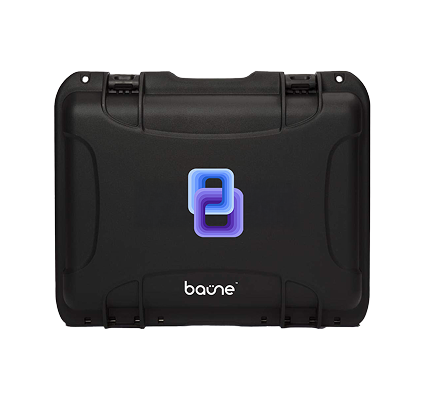
Hard Case Option
Certifications
- IPX7 INGRESS PROTECTION - WATERPROOF
- 1P6X INGRESS PROTECTION - DUSTPROOF
- ATA SPECIFICATION 300 - CATEGORY 1 IMPACT
- ASTM D-4169 DC-18 - DROP TEST
- ASTM D-4169 DC-18 - VIBRATION
- ASTM D-4169 DC-18 - RAINFALL
- MIL-STD-810F - IMMERSION
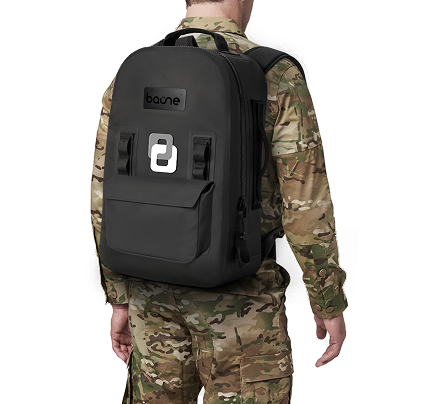
Bag Option
Certifications
- IPX7 INGRESS PROTECTION - WATERPROOF
Regulatory & Compliance
SYSTEM AS A MEDICAL DEVICE [ HEALTH CANADA ] - in process
Disclaimer
Product features, functionality, and availability dates are subject to change without prior notice. Certain features may be limited by region, language, or other restrictions. Additional terms, server-side components, and/or fees may apply. For full legal, regulatory, and warranty details, please visit baune.io/legal.
Want to Learn More?



